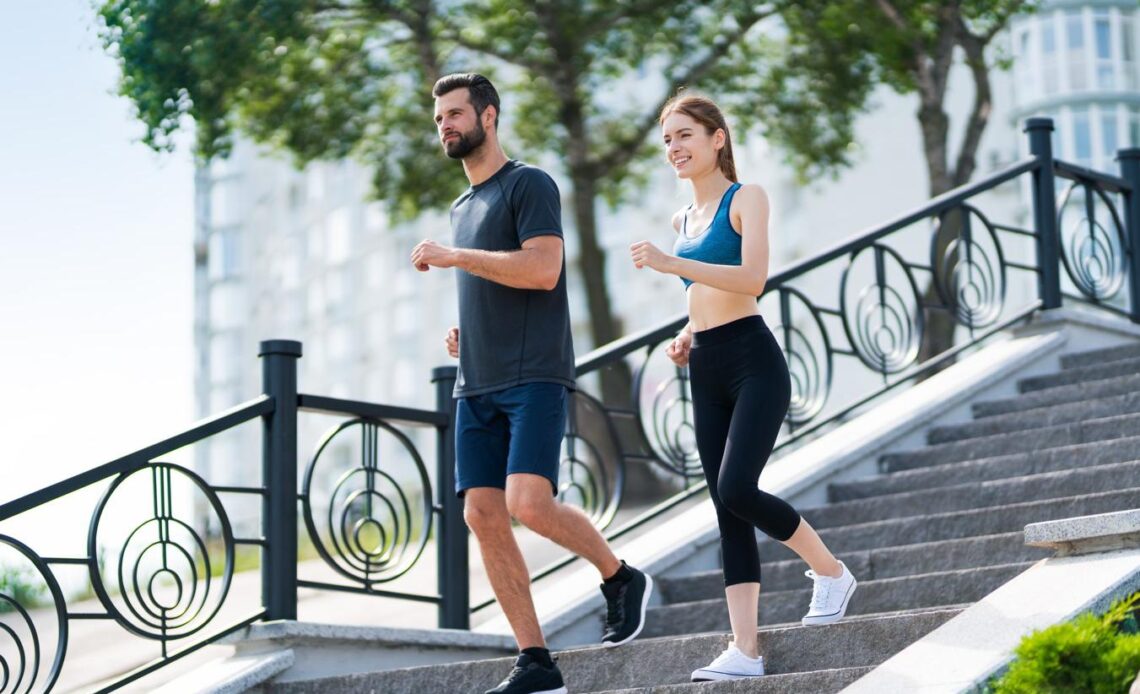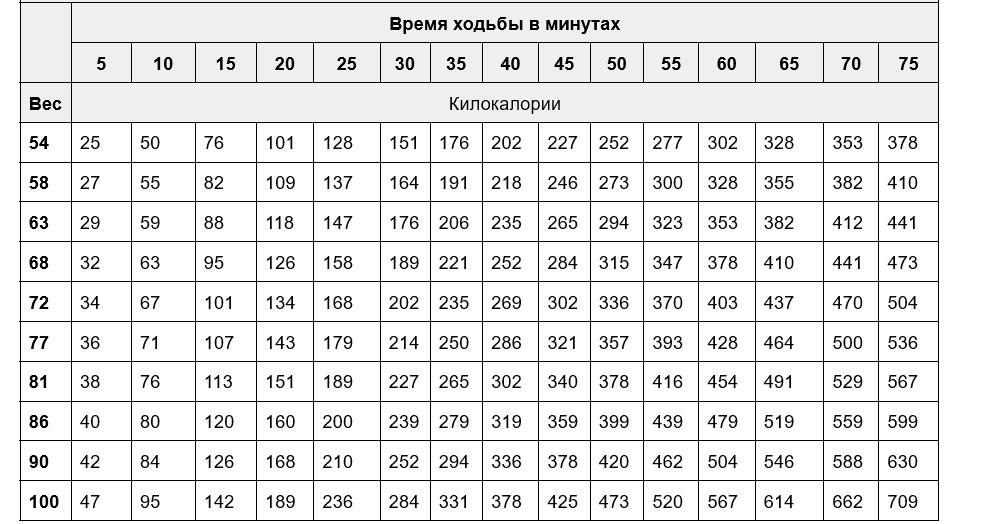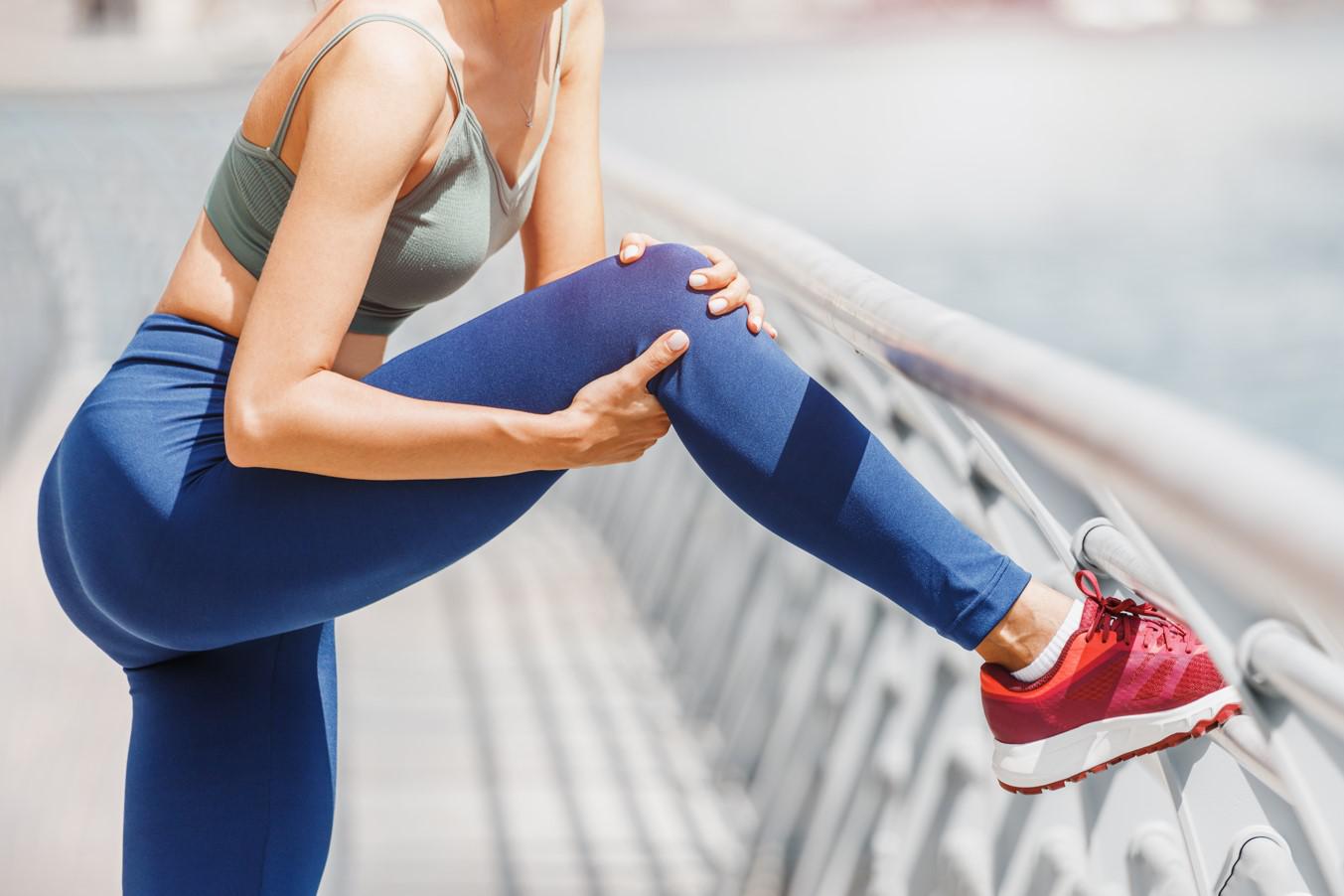
The first walking sessions should last no more than 30 minutes at a moderate pace. Then the time of walking is increased, as is the intensity. Advanced walkers can use weights or train on difficult terrain. Together with experts, we figure out what the benefits of walking are, how to start training, and whether there are any contraindications.
- Efficiency
- How it works
- Types
- Benefit
- Harm
- How long to walk
- How to do it right
Tatyana Pavlovskaya, expert trainer of the Pride Fitness chain of fitness clubs;
Elena Golikova, PhD, functional diagnostician, cardiologist, leading specialist of the Family Clinic network.
How many calories are burned when walking
Walking burns a lot of calories and helps in weight loss
In one hour of walking, you can burn at least 200 kcal (3-5 kcal/min.). This is an average figure, since the exact values are individual and depend on height and weight, as well as walking pace. You can also calculate the kilocalorie expenditure by the number of steps, as fitness trackers or online calculators do. For example, a person weighing 80 kg will burn about 400 kcal for 10 thousand steps (approximately 8 km).
How many calories are burned when walking (1)

What muscles work when walking

Walking involves the entire body.
Walking is a type of cardio exercise that works all major muscle groups (calves, thighs, abdomen and back) (2).
- Back muscles. Located on both sides of the spine, from the base of the skull to the pelvis. During walking, they work to straighten the back, helping to control the movements of the body. Gradually, the muscles become stronger. This is important both for a straight posture and for the ease of performing certain movements. For example, rising from a sitting position or leaning the torso back.
- Abdominal muscles. Those same six cubes, the relief of which many dream of seeing in the reflection of the mirror. The abdominal muscles help to rotate the body, sit down, stand up, including from a lying position.
- Thigh muscles. Walking works the gluteal muscle. In addition to its impressive shape, it is also important for controlling the position of the pelvis and performing certain movements, such as when you need to move your leg to the side. When walking, the gluteal muscle maintains pelvic stability when the body weight is on one leg.

Types of walking
Start training with regular walking, over time the technique can be complicated
Walking is distinguished by speed or intensity, as well as duration. In addition, there are disciplines with additional load; a separate category is professional race walking. Types of walking:
- Sports. INa sport at all levels of athletics, from youth games to the Olympics. The main rule: athletes must maintain contact with the ground at all times, straightening the leading leg when the foot touches the ground. Race walking is practiced in stadiums. Professional athletes can walk at speeds of 12 km/h or more.
- Scandinavian. This is walking with poles that can look like ski poles (they are actually different). They are used to push off the ground. This involves more muscles. Nordic walking can be done on both hard sidewalks and dirt surfaces. The average speed at a moderate pace is about 5 km/h.
- Daily. One way or another, a person walks every day. But even in this case, according to experts, it is worth following the rules: try to keep your back straight, watch your breathing and stick to one pace. The gold standard is considered to be 10 thousand steps a day.
- Intense. This is walking at an increased pace, which is determined individually. Trainers do not recommend starting with fast walking. The load is increased gradually.
- Along the paths and hills. A kind of hiking that requires knowledge. It is quite a strenuous walk in terms of load.
- With load. Walking on an inclined surface is harder, but it also burns more calories. You can add extra load by taking a backpack with you, for example. However, it is better to start doing this type of walking after mastering the basic technique.

Benefits of Walking
Walking is one of the most accessible ways to maintain overall health. It speeds up blood circulation, saturating cells with oxygen, and also makes almost all muscles work. All this together strengthens the body and helps to burn off excess calories. What are the benefits of walking:
- Strengthens the functioning of the cardiovascular system. Walking at varying intensities increases your heart rate and improves circulation. All of this strengthens your heart and lowers your blood pressure. This is especially important for those at risk for heart disease (3). Be sure to monitor your heart rate while walking: one person will be comfortable with a rhythm of 160 bpm, while another will have to slow down at a pulse of 90 bpm.
- Lifts your spirits. Walking for 10-20 minutes will improve your mental health, including reducing stress and smoothing out negative emotions. Research has shown that any form of physical activity, including walking, triggers the production of endorphins (4). Another name for them is the hormones of happiness. Endorphins are involved in the so-called reward system, which underlies routine motivation. This is important, including for regular training.
- Helps to lose weight. Walking is a physical activity that burns calories. When there are too many calories, excess weight appears. To reduce or maintain optimal weight, a small deficit is needed. It is achieved through diet and physical activity. Online calculators will help you calculate your individual norm in steps or time.
- Strengthens muscles. Walking tones the muscles of your legs and stomach, and even your arms if you use them while walking. This is important for maintaining overall tone, especially if you lead a predominantly sedentary lifestyle.
- Improves sleep. Research shows that physical activity has a positive effect on sleep quality (but not duration) (5). However, intense exercise three hours before bedtime can increase your heart rate, body temperature, and adrenaline levels (6). So plan your brisk walks for the evening wisely.
The harm of walking
Walking, especially intense and long-term, is a strain on the body. For some people, it may be excessive. In addition, beginners can harm themselves due to inexperience by choosing uncomfortable shoes or clothes.
In addition, says Elena Golikova, there are conditions in which any training is impossible or possible only under medical supervision. These include:
- acute period of infectious diseases (with high temperature or intoxication);
- the time immediately after a heart attack or stroke (within the first month or even less – the time to increase physical activity is determined by the attending physician);
- postoperative period (the time of activity restriction depends on the nature of the intervention and is determined by the doctor);
- severe heart rhythm disturbances (not the sensation of interruptions or palpitations that occur at different periods of life in any person, but severe conditions when the patient ends up in hospital or even in the intensive care unit).
Excessive exercise, even from walking, can trigger overtraining syndrome. It occurs when the volume and stress of exercise exceeds the body's ability to recover. Common symptoms of overtraining syndrome (7):
- loss of strength;
- depression, increased irritability;
- lack of appetite;
- heaviness, stiffness and soreness of muscles;
- frequent colds and headaches.
